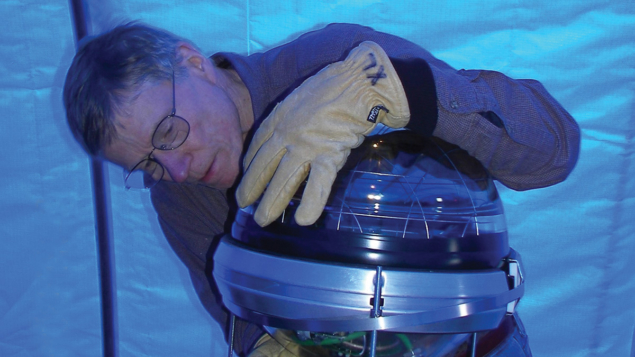
Thomas K Gaisser of the University of Delaware passed away on 20 February at the age of 81, after a short illness.
Tom was born in Evansville, Indiana, and graduated from Wabash College in 1962. He won a Marshall Scholarship that took him to the University of Bristol in the UK, where he received an MSc in 1965. He then went on to study theoretical particle physics at Brown University, receiving his PhD in 1967. After postdoctoral positions at MIT and the University of Cambridge, he joined the Bartol Research Institute in 1970, where his research interests tilted toward cosmic-ray physics.
Tom was a pioneer in gamma-ray and neutrino astronomy, and then in the emerging field of particle astrophysics. He was a master of extracting science from the indirect information collected by air-shower arrays and other particle astrophysics experiments. Early on, he studied the extensive air showers that are created when high-energy cosmic rays reach Earth. His contributions included the Gaisser–Hillas profile of longitudinal air showers and the Sybill Monte Carlo model for simulating air showers. He laid much of the groundwork for large experiments, such as Auger and IceCube, that provide high-statistics data on the high-energy particles that reach Earth, and for how that data can be used to probe fundamental questions in particle physics.
Tom’s work was also vital in interpreting data from lower-energy neutrino experiments, such as IMB and Kamioka. He provided calculations of atmospheric neutrino production that were important in establishing neutrino oscillations and, later, for searching for neutrino phenomena beyond the Standard Model.
Tom also contributed to experimental efforts. He was a key member of the Leeds–Bartol South Pole Air Shower Experiment (SPASE), which studied air showers as well as the muons these produce in the Antarctic Muon and Neutrino Detector Array (AMANDA). The combined observations were critical for calibrating AMANDA, and were important data for understanding the cosmic-ray composition. This work evolved into a leading role for Tom in the IceCube Neutrino Observatory, where he served as spokesperson between 2007 and 2011.
In IceCube, Tom focused on the IceTop surface array. Built, like SPASE, as a calibration tool and a veto-detector, its observations contributed to cosmic-ray physics covering a wide and unique energy range, from 250 TeV to EeV. It also made the first map of the high-energy cosmic-ray anisotropy in the Southern Hemisphere. Tom took to the task of building IceTop with gusto. For several summer seasons he travelled to Antarctica, staying there for weeks at a time to work on building the surface array, which consisted of frozen Auger-style water–Cherenkov detectors. He delighted in the hard physical labour and the camaraderie of everyone engaged in the project, from bulldozer drivers to his colleagues and their students. Tom became an ambassador of Antarctic science, in large part through a blog documenting his and his team’s expeditions to the South Pole.
Tom may be best known to physicists through his book Cosmic Rays and Particle Physics. Originally published in 1990, it was updated to a second edition in 2016, coauthored with Ralph Engel and Elisa Resconi. It sits on the shelves of researchers in the field around the globe.
Throughout his career, Tom received many scientific awards. He became a fellow of the American Physical Society in 1984 and was internationally recognised with the Humboldt Research Award, the O’Ceallaigh Medal and the Homi Bhabha Medal and Prize, among others. His Antarctic contributions were recognised when a feature on the continent was named Gaisser Valley.








